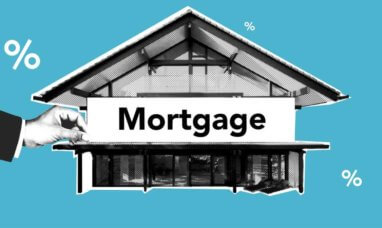Buying a house is so exciting! But it can also be a lot of work and, at times, stressful.
Since most people don’t have the capital needed to buy a house just lying around, it usually means taking out the largest debt of your life.
Are you wondering how to get a mortgage? Read on to find out!
10 Steps to Get a Mortgage
1. Build Your Credit
A good credit score isn’t just a helpful tool to get approved for a mortgage. It also helps the lender determine the interest rate they will charge you.
Typically, a person with a lower score represents more of a risk to the lender. They haven’t been creditworthy in the past or don’t have much history to draw from. To compensate for this higher risk, lenders charge a higher interest rate.
Thus, the higher your score, the cheaper your loan will be in the long run. Curious to understand how much your interest rate matters?
Consider this: with all other factors being equal, you will spend over $62,000 more in interest on a $300,000 house with a 4.5% interest rate compared to 3.5% interest. That 1% really makes a difference!
So start making all your payments on time, lowering the amount of debt you carry, and doing whatever else you can to bump up your score.
2. Figure Out How Much House You Can Afford
Whether you’re buying land for a prefab home or purchasing a prebuilt home, you need to know your budget. A mortgage calculator can help you figure out how much house you can afford.
Remember, lenders may be willing to lend you more money than you should spend on a house. They don’t take into account saving for retirement or any other financial goals you have. So make your calculations based on your whole budget — not just your income and current debts.
3. Build a Nest Egg
You need to have cash on hand to cover various expenses before you can buy a home. A big one is the down payment. You can get mortgages that only require small down payments, but the loan will be more expensive in the long run.
Other expenses include closing costs which can equal 2% to 5% of the sale price, moving expenses, and an emergency fund for those “life happens” moments.
4. Pick the Best Mortgage
Choosing the right mortgage is more than just picking the one with the lowest interest rate. There are many different types of mortgages, and some will be better than others for your situation.
As a rough outline, there are three main categories of loans.
Conventional Loans: These are best for people who have a solid credit score and a large down payment saved up.
Government-Backed Loans: These allow people with small down payments and low credit scores to still get a mortgage. Some have regional restrictions, and others are limited to certain groups, such as VA loans for veterans and their families.
Jumbo Loans: These are for those with deep pockets. Lenders can only lend conventional loans up to a certain amount (just over half a million dollars in most places). Folks who want to buy a house more expensive than that will need a jumbo loan.
You may also qualify for government assistance, such as the first-time home buyer’s tax credit. Just remember that if you don’t live in the home for three years, you’ll have to make first-time homebuyer installment payments to pay it back.
You may also opt for the homes for heroes program if you’re eligible as part of the military and other workers.
5. Choose Your Lender
Once you’ve done your own loan research, it’s time to start shopping around. Lenders offer a variety of loan products with varying interest rates, fees, and other terms.
Remember, comparing loan products is not always comparing apples to apples. Picking the one with the lowest interest rate won’t necessarily be the best deal. You have to read the fine print on each loan and fully understand all the fees and terms to pick the best lender for your needs.
6. Get Your Pre-Approval Letter
You may have already prequalified for a loan as you were shopping around. However, before you begin looking at houses, it’s a good idea to get your pre-approval letter.
This process is more formal and more involved than prequalification. It allows you to put an immediate offer in on a house because you are almost assured that you’ll be approved for your loan. (It’s not 100% until you actually submit your application and are approved, but you’re as close as you can get).
7. Begin Looking for a House
Now you’re prepared to begin house hunting. You know how much you can spend and are in a position to make an offer. It’s time to look for the home of your dreams.
8. Apply for the Loan
Once you’ve found your home, you’ll need to formally apply for the loan. You’ll need to supply various documents to prove your financial ability to undertake the loan.
Gather documents like:
-
-
- Pay stubs, tax returns, or anything else showing proof of income
- Employment history for the past two years
- Financial statements showing your bank accounts and assets
-
9. Wait for Underwriting
Now comes the agonizing few weeks of waiting for the lender to verify all the information. They may require a few inspections and documentation during this time to ensure the property’s value and soundness. For example:
-
-
- An appraisal
- Home inspection
- Termite inspection for buying a home
- And more
-
Basically, the underwriters are looking to find anything wrong with the home or your financials. Red flags for mortgage underwriters include:
-
-
- Problems with your credit score or history
- Large deposits from unknown sources
- Income fluctuations (such as bonuses or overtime pay)
- Large last-minute purchases (don’t buy a car when you’re trying to get approved for a loan)
- Too high of a debt-to-income ratio
-
10. It’s Closing Day!
Finally, after all the paperwork, legwork, and everything else — the big day arrives! Don’t forget that you’ll still need to bring money to the table to cover the closing costs.
But at this point, you’ve made it. All that’s left is to move into and enjoy your new home!
The Bottom Line
All in all, applying for a mortgage, though lengthy, is not too difficult. For the smoothest ride, have all your financial ducks in a row and aim for a home that is well within your budget.
Worried about forgetting a step? Check out a home buyer checklist template so you won’t miss anything along the way.
Featured Image: Megapixl








